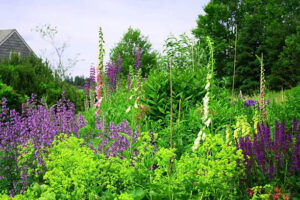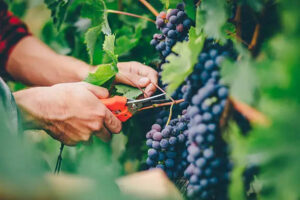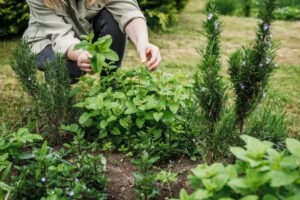Water is essential for plant life, but like many things, too much can cause harm. Overwatering is one of the most common mistakes in plant care, particularly among new gardeners. This well-intentioned error can lead to various problems, ultimately jeopardizing plant health. Understanding the risks of overwatering, recognizing why it occurs, and knowing which plants are more susceptible or tolerant to excess water is crucial for maintaining healthy plants.
The Risks of Overwatering
Root Rot: The most severe consequence of overwatering is root rot, where roots suffocate and decay due to excessive moisture. This happens because overly wet soil lacks sufficient air, which roots need to breathe. Root rot can fatally damage a plant, as the roots are crucial for water and nutrient uptake.
Fungal Growth: Excess moisture creates an ideal environment for fungal growth and other pathogens. Diseases like powdery mildew or blight can spread more quickly in conditions where water is abundant.
Nutrient Leaching: Overwatering can wash away essential nutrients from the soil, which are then not available to the plant. This can lead to nutrient deficiencies, stunting growth and reducing plant vitality.
Poor Plant Health: Overly moist conditions can lead to weak plants with stunted growth, yellowing leaves, and a diminished ability to photosynthesize effectively.
Why People Overwater
Misunderstanding Needs: Many people assume more water is better for growing healthy plants. They often do not consider the specific water needs of each plant type.
Overcompensation: In some cases, when plants look unhealthy, there’s a tendency to believe that more water is the solution, when the opposite might be true.
Inconsistent Schedules: Watering plants without a consistent schedule or understanding of when the soil is actually dry can lead to overwatering.
Plants That Can Tolerate More Water

While most plants suffer from too much water, a few thrive in moist environments or even standing water. These include:
- Bald Cypress (Taxodium distichum): A majestic tree often found in wetlands across the Southeast, the Bald Cypress is well-adapted to waterlogged soils and can even grow in standing water. Its feathery foliage and attractive, fluted trunk make it a striking landscape feature.
- Weeping Willow (Salix babylonica): Ideal for very moist soils and standing water near ponds or streams, the Weeping Willow is renowned for its beautiful, drooping canopy and quick growth, making it an excellent choice for adding drama and shade to watery landscapes.
- Swamp Milkweed (Asclepias incarnata): Ideal for butterfly gardens, this native perennial attracts monarch butterflies with its pink and light purple flowers. It thrives in moist soils and is often found near ponds or streams.
- Swamp Hibiscus (Hibiscus moscheutos): Also known as the Rose Mallow, this plant produces large, showy flowers and prefers wet, boggy conditions. It’s perfect for adding a splash of color to water gardens or damp areas in the landscape.
- Canna Lily (Canna spp.): While not native, Canna Lilies are well-suited to Alabama’s climate and thrive in moist soils. They provide tropical-looking foliage and vibrant blooms from summer to fall.
- Pickerel Weed (Pontederia cordata): Commonly found in ponds and streams, Pickerel Weed features striking purple flower spikes and heart-shaped leaves. It’s excellent for naturalizing in wet areas.
- Joe-Pye Weed (Eutrochium purpureum): This native perennial loves wet soils and can often be found in natural wetlands. It offers tall stalks of fluffy, pinkish-purple flowers that attract pollinators.
- Southern Blue Flag Iris (Iris virginica): A beautiful native iris that thrives in very moist conditions or shallow water. Its striking blue flowers make it a favorite for water features and rain gardens.
- Water Lilies (Nymphaea spp.) and Lotus (Nelumbo nucifera), both of which are aquatic plants, require a substantial amount of water and are designed to thrive in ponds.
Tips for Gardening in Wet Areas

- Soil Preparation: While these plants tolerate wet conditions, improving soil with organic matter can help provide necessary nutrients and support healthier growth.
- Proper Planting: Even water-loving plants can suffer if water stagnates. Ensure the planting area allows for some drainage or water movement to prevent root rot.
- Mulching: Use mulch to help retain soil moisture and control weeds, but avoid piling it up against plant stems to prevent rot.
By incorporating some of these water-tolerant plants into your garden, you can take advantage of Alabama’s natural rainfall and landscape features, creating a lush, vibrant garden that thrives throughout the year.
Plants That Prefer Drier Conditions

Conversely, many plants prefer dry periods between watering, particularly those native to arid environments or adapted to conserve water.
- Yucca (Yucca filamentosa): Known for its striking sword-shaped leaves and tall spikes of white flowers, Yucca is a robust plant that thrives in dry, sandy soil. It’s very drought-tolerant and adds architectural interest to the garden.
- Sedum (Sedum spp.): Often called “stonecrop,” Sedums are succulents that store water in their leaves. They are extremely drought-tolerant and perfect for hot, dry spots. Varieties like Sedum ‘Autumn Joy’ offer beautiful blooms and attract pollinators.
- Lavender (Lavandula spp.): Lavender thrives in full sun and well-drained, sandy soil, making it ideal for Alabama’s drier gardens. It’s beloved for its fragrant flowers and is often used in both culinary and cosmetic products.
- Russian Sage (Perovskia atriplicifolia): This hardy perennial features wispy lavender-blue flowers and silvery foliage, thriving in hot, dry conditions. It’s perfect for adding a splash of color to a drought-tolerant landscape.
- Blanket Flower (Gaillardia x grandiflora): With its bright, cheerful flowers in red, orange, and yellow, the Blanket Flower is a drought-resistant plant that performs well in poor, dry soils. It blooms extensively and attracts butterflies.
- Purple Coneflower (Echinacea purpurea): While it prefers well-drained soil, it can tolerate periods of drought once established. Its vibrant purple flowers are not only beautiful but also attract pollinators and are excellent for cutting.
- Agave (Agave americana): Agave plants are succulents with a dramatic form that can handle extremely dry conditions. They make a bold statement in any garden where they have plenty of space to spread out.
- Coreopsis (Coreopsis spp.): Coreopsis, or tickseed, is a durable perennial that thrives in dry, sandy soils and full sunlight. It produces a bounty of bright, daisy-like flowers throughout the summer.
- Mexican Feather Grass (Nassella tenuissima): This ornamental grass is favored for its delicate, feathery plumes and ease of care. It’s extremely drought-tolerant and adds texture and movement to the landscape.
Gardening Tips for Dry Soils

- Improve Soil Structure: Although these plants tolerate dry soil, incorporating organic matter can enhance the soil’s structure and nutrient content.
- Mulching: Applying a layer of mulch helps retain soil moisture and reduces weed competition.
- Watering Wisely: Even drought-tolerant plants may need some watering during establishment or extended droughts. Water deeply but infrequently to encourage strong root growth.
Choosing the right plants for your soil type and climate can make gardening more successful and enjoyable. These drought-tolerant plants not only survive but thrive in Alabama’s dry soil conditions, making them excellent choices for low-maintenance and water-efficient landscapes.
General Tips for Proper Watering

- Check Soil Moisture: Before watering, check the soil’s moisture content. A simple finger test—inserting a finger into the soil up to the second knuckle—can help you feel whether the soil is dry or moist.
- Understand Plant Needs: Familiarize yourself with the specific water requirements of each plant species you own.
- Use Well-Draining Pots: Ensure that all pots have drainage holes to allow excess water to escape.
- Monitor Weather and Adjust: Be mindful of natural rainfall or changes in temperature and adjust your watering practices accordingly.
Understanding the balance between too much and too little water is key to successful plant care. By recognizing the water needs of specific plants and monitoring soil moisture carefully, gardeners can avoid the pitfalls of overwatering and promote a healthy, thriving garden.










